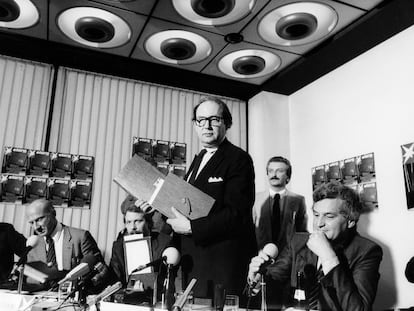Hitler wouldn’t have hesitated to exterminate Freud: A book reconstructs how a diverse group of people narrowly saved him from the Nazis
While the father of psychoanalysis managed to escape from Vienna after the Anschluss in 1938, four of his sisters died in the camps. Three of them were gassed in Treblinka
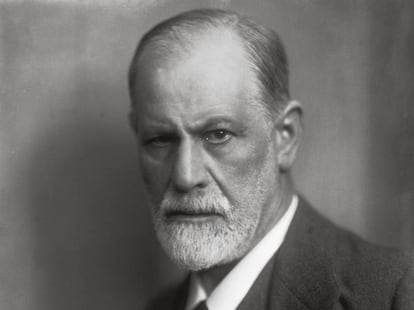

It’s hard to imagine Sigmund Freud — often associated with Habsburg Vienna and Biedermeier furniture — standing up to a regiment of brutal Nazi brownshirts. However, this did indeed happen. On March 15, 1938, Hitler — having completed the Anschluss (the annexation of Austria) — addressed a crowd from the balcony of the Hofburg, the imperial palace in Vienna. The same day, a group of armed SA thugs appeared at the home and office of the father of psychoanalysis, and they weren’t there for a therapy session.
Freud, who was 82 at the time, was one of the most famous Jewish Austrians in the city. The Nazis had been waiting to pick him up for a long time. His wife, Martha, tried to calm the swastika-wearing madmen by treating them politely and inviting them to leave their rifles in the umbrella stand. But the Nazis went ahead and seized all the money and valuables in the house. Then, Sigmund Freud appeared. He stood bravely before them, with a frown on his face and eyes shining like — as one witness described — “a prophet from the Old Testament.” The storm troopers — frightened by the appearance of the imposing old man — called him “Herr Professor” and left the house… but not without threatening to return. Upon learning how much money they had taken, Freud commented with his own sardonic sense of humor: “I’ve never charged so much for a single visit.”
The scene is described by the Edinburgh-born American journalist and writer Andrew Nagorski, 76, best-known as the author of The Nazi Hunters (2017). He relates the episode in his most-recent book, Saving Freud: The Rescuers Who Brought Him to Freedom (2022). With a Spielberg-style title, it perfectly summarizes what the work is about: how the author of The Interpretation of Dreams managed to get out of the nightmare that Vienna was becoming under Nazi rule.
Nagorski – who reconstructs how a diverse handful of followers and friends helped Freud escape from the clutches of the Nazis – is very blunt about the fact that Hitler wouldn’t have hesitated to exterminate the psychoanalyst. If Freud hadn’t escaped, he would inevitably have been another victim of the Holocaust. In fact, four of his sisters died in the Nazi camps in 1942. Three of them — Rose, Marie and Pauline — were killed in the Treblinka gas chambers, while the fourth, Dolfi, died from starvation in Theresienstadt. “If Freud had stayed — and if hadn’t [died from the] cancer that ended up killing him in London — the Nazis would have murdered him, in the camps or in any other way. He was a symbol of the most dangerous Jew to them. And they made very few exceptions.”
Saving Freud looks at the psychoanalyst’s motley group of helpers, among them his doctor, a Welsh disciple, an American diplomat, the great-grandniece of Napoleon, and even a Nazi admirer. The book focuses on Freud’s rescue from Vienna, but at the same time, it’s a very entertaining way to explore the scientist’s existence and the main events of his life. The book follows Freud’s biography, from his birth in 1856 in the then-Moravian Freiberg (part of the present-day Czech Republic), to his experiments with cocaine, hypnosis and rats. It looks at how he coined the terms “psychoanalysis” or “Oedipus complex,” while discussing the troubles he had with Jung, Adler and Ferenczi. You can read about his relationship with Einstein, his disdain from the United States, or the great affection he had for his dog. Thanks to “Operation Freud” — as Nagorski calls it — the wise man was able to die in bed in London, on September 23, 1939.
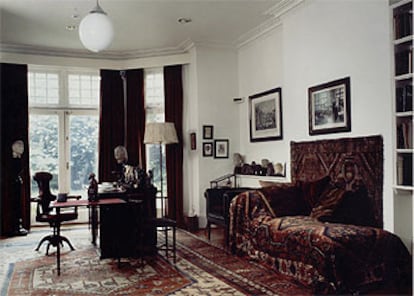
“That scene of Freud in front of the SA is one of the reasons why I wanted to tell this story,” Nagorski explains, in a Zoom interview with EL PAÍS from his home in St. Augustine, Florida. “We tend to think of Freud as a figure from the 19th and early-20th centuries; it’s less-known that he lived through the Anschluss and had that encounter with the Nazis. How he survived and managed to escape constitutes an almost cinematic story. In fact, they’ve already bought the rights to the book from me, to make it into a film.”
The son of a wool merchant who already had two other boys from a previous marriage, Freud had five sisters and one brother, all younger than him. When he was four-years-old, the family moved to Vienna. Freud always maintained a love-hate relationship with the city, but he became attached to it nonetheless, to the point that it took a lot of convincing for him to finally flee. He lived through the golden age of the city, as well as the dark years. Vienna was also where Hitler spent his formative years as a struggling artist. And Freud spent his summers in Berchtesgaden, where Hitler would install his alpine refuge upon coming to power.

In his book, Nagorski shows a warm and luminous Freud, very distant from the image of the dour and serious scientist. He notes that Freud was immersed in the human mind and its disturbing sexual secrets, while he kept a strict routine. Nagorski points out that Freud was also quite prudish and conceited (he swam breaststroke so as not to wet his well-kept beard) and that he didn’t like bicycles or telephones. “It’s curious that such an iconic figure is often given such a distorted image. While doing research to write the book, I’ve seen that, in general, we know little about Freud as a person.” He had a very bourgeois life and was quite healthy, only tormented by jaw cancer — which began in 1923 — and the Nazis. He married Martha Bernays, who hailed from a family of German Orthodox Jews. The marriage — which produced six children (among them Anna Freud, her father’s successor and part of the group who oversaw his escape from Vienna) — lasted 53 years, until his death.
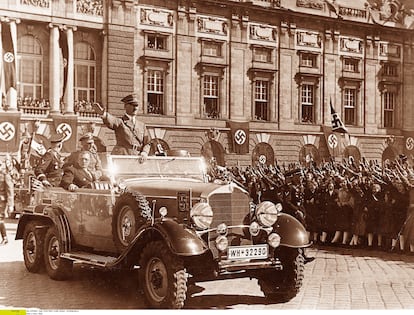
Well-aware of his condition as a Jew (although he was neither religious nor observant), Freud refused to be intimidated by antisemitism and he underestimated the Nazi threat. Despite all the warnings — and his own vision of the individual’s worst urges — he didn’t think it was possible that a nation such as Germany, which had produced people like Goethe, could “head toward evil.” He also thought that Austrians were different… which is sinisterly funny when you think of Freud’s compatriots, including notorious Nazis such as Kaltenbrunner, Odilo Globocnik, Franz Stangl, or Amon Göth. Of course, when the Anschluss was concluded, he wrote his famous entry in his diary: “Finis Austriae,” or “the end of Austria.” Regarding the Austrians — most of whom welcomed Hitler with open arms and, after the defeat, tried to pass themselves off as the first victims of the Third Reich — Nagorski recalls how they managed to deceive the world into believing that Beethoven was Austrian and Hitler was German.
Freud and psychoanalysis — which was considered to be a “Jewish science” — was particularly hated by the Nazis. When Hitler came to power in 1933, the movement was persecuted in Germany, leaving psychotherapy in the hands of Hermann Göring’s cousin. Freud’s books were among those that were publicly burned, while the perpetrators chanted: “Against the soul-destroying overestimation of the sex life — and on behalf of the nobility of the human soul — we offer the flames the writings of Sigmund Freud.”
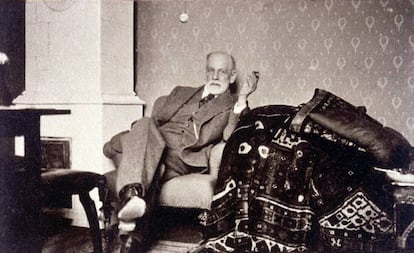
Freud — along with 18 adults and six children, in addition to his beloved chow chow — managed to escape from Vienna to London via Paris, on June 4, 1938. He also brought his couch with him.
Given how the situation was in Austria, it was a true miracle to be able to get so many Jews out, especially with a universal figure like Freud at the helm. The secret was the stubbornness and devotion of the group of rescuers, as heterogeneous as the Nazi hunters in Nagorski’s previous book. “In both cases, it was a cast worthy of a novel: he had such different and dedicated friends and followers, which says a lot about Freud,” the author emphasizes.
It’s surprising not to find Jung in the group, even though they were so close. “Freud saw him as his successor and he really liked that he wasn’t Jewish — [Jews were] the majority in the psychoanalytic movement — so that the two factors couldn’t be associated and limit the reach of the new science. But they had very different visions,” Nagorski clarifies, “and, at that time, there was a lot of resentment. Their separation had already occurred before World War I. [So], when Freud was in danger, Jung was no longer part of his-circle.”
Jung apparently tried to give Freud some money before he left, but this gesture was rejected. “I refuse to be indebted to my enemies,” Freud sniffed. Jung’s attitude toward Nazism and antisemitism has also created controversy. He “showed certain sympathies and fooled around with extreme right-wing ideas, but he left [politics] to others, who knew more about the subject,” Nagorski explains.
There’s no doubt, however, about what Hitler thought of Freud. “He knew of his existence, although there’s no direct evidence. It’s clear that he detested psychoanalysis as a Jewish science — Freud’s books were among the first to burn in the Nazi bonfires. Freud’s conception of the subconscious and sexuality was anathema to the Nazis, who subordinated everything to the nation and their racial ideology. The idea of something uncontrollable in the human mind seemed subversive to them, despite the fact that they themselves were an example of the darkest impulses,” the author says. For his part, Freud didn’t comment — at least in writing — on the possible pathology of Hitler’s psyche and the origins of his evil.
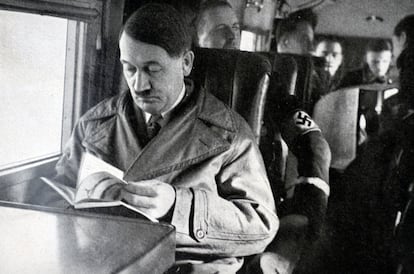
There has been speculation about what would have happened had Hitler been psychoanalyzed by Freud. “It’s difficult to imagine Hitler on Freud’s couch. Hitler would never have allowed it, he [thought himself] infallible,” Nagorski scoffs. However, there certainly would have been things to talk about, such as the subject of Hitler’s “original trauma.”
“There’s a lot of literature about this… Hitler’s radical antisemitism flourished, so to speak, in his years as a frustrated artist in Vienna, between 1908 and 1913. [That was when] he saw the most atrocious face of the city, where prostitution and misery reigned and where he sometimes found himself sleeping on the street,” Nagorski points out. “He could have experienced sexual trauma [at the time] and linked it to the Jews. But Hitler was fundamentally an opportunist, not at all introspective, who used different [materials] to craft his political tool.”
Could Hitler and Freud have crossed paths on the streets of Vienna during those years? “It’s a speculative exercise,” Nagorski acknowledges, “but yes, it was perfectly possible that they could have run into each other.”
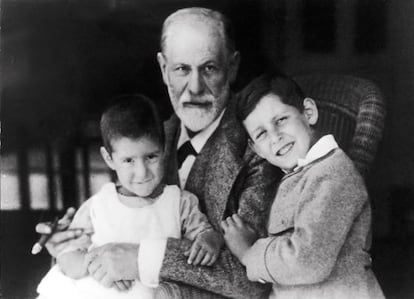
“Now we’re free,” Freud sighed, as he and his relatives crossed the Rhine on a train, fleeing to France. He eventually moved to London and settled in a house at 20 Maresfield Gardens in Hampstead (now a museum, as is his Vienna home), where he spent the rest of his life and continued his practice as long as he could. There, he was visited by — among others — Virginia Woolf and Salvador Dalí, who liked him very much.
One of the things that has surprised Nagorski the most in his exploration of Freud was the neurologist’s remarkable sense of humor. Commenting on his meeting with Einstein, Freud joked: “I don’t know anything about physics and he doesn’t know anything about psychoanalysis, so we had a very pleasant time.” And, when Freud had to sign a declaration to leave Austria — a document that exonerated the Nazi authorities ― he couldn’t think of anything other than to say out loud: “I can heartily recommend the Gestapo to anyone.” Nagorski thinks that Freud would have hit it off with Woody Allen.
During the journey to exile, Freud’s train passed through Dachau, Germany. But we don’t know if the scrutinizing gaze of the professor of the soul — upon looking out the window — recognized what horrors and perversions of humanity were being unleashed there. We don’t know if the darkness that spread from that concentration camp saw him pass, gnashing its teeth because he was escaping.
Sign up for our weekly newsletter to get more English-language news coverage from EL PAÍS USA Edition
Tu suscripción se está usando en otro dispositivo
¿Quieres añadir otro usuario a tu suscripción?
Si continúas leyendo en este dispositivo, no se podrá leer en el otro.
FlechaTu suscripción se está usando en otro dispositivo y solo puedes acceder a EL PAÍS desde un dispositivo a la vez.
Si quieres compartir tu cuenta, cambia tu suscripción a la modalidad Premium, así podrás añadir otro usuario. Cada uno accederá con su propia cuenta de email, lo que os permitirá personalizar vuestra experiencia en EL PAÍS.
¿Tienes una suscripción de empresa? Accede aquí para contratar más cuentas.
En el caso de no saber quién está usando tu cuenta, te recomendamos cambiar tu contraseña aquí.
Si decides continuar compartiendo tu cuenta, este mensaje se mostrará en tu dispositivo y en el de la otra persona que está usando tu cuenta de forma indefinida, afectando a tu experiencia de lectura. Puedes consultar aquí los términos y condiciones de la suscripción digital.
More information
Archived In
Últimas noticias
The new language of the workplace: Knowing how to ask AI questions is more important than using it
Russell Tovey: ‘I was advised many times not to come out, I don’t think there was many people who’d done that — and I feel really proud that I’m one of those that did’
Patagonia’s puma population soars thanks to unexpected prey: penguins
Merz tries to replace Macron at the helm of Europe
Most viewed
- The low-cost creative revolution: How technology is making art accessible to everyone
- Families demand repatriation of bodies of Colombians who died in Ukraine: ‘This war is a slaughterhouse for foreigners’
- Christian Louboutin: ‘Young people don’t want to be like their parents. And if their parents wear sneakers, they’re going to look for something else’
- US sanctions against jailed cartel leader ‘El Marro’ highlight Mexico’s lack of control over its prisons
- Liset Menéndez de la Prida, neuroscientist: ‘It’s not normal to constantly seek pleasure; it’s important to be bored, to be calm’

